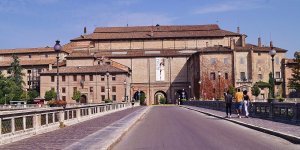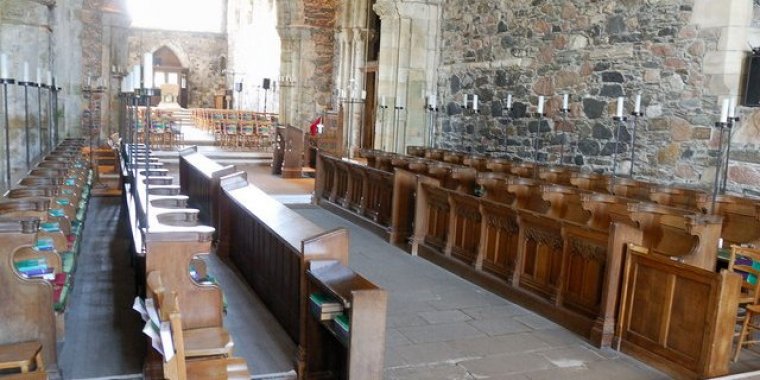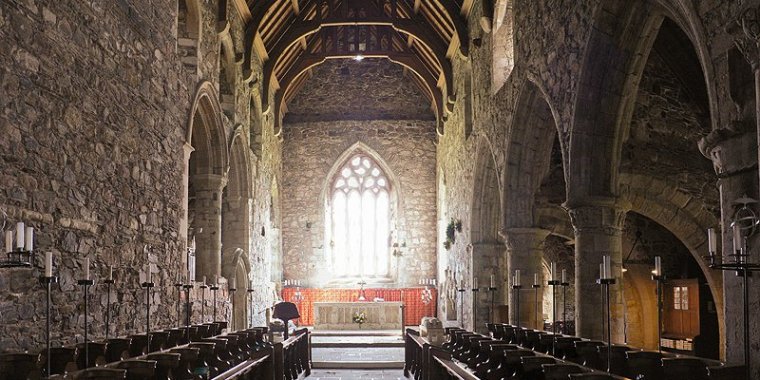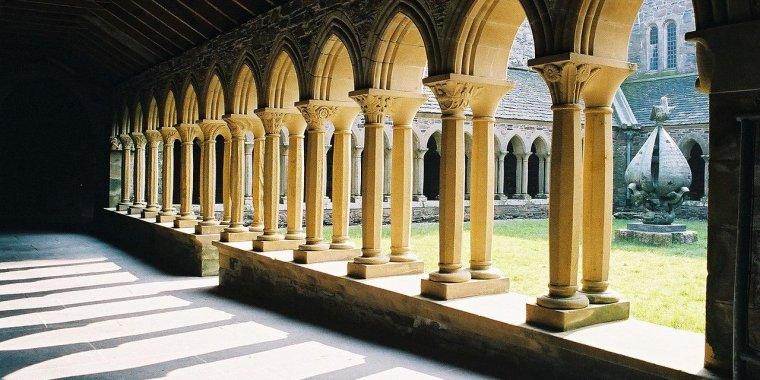| Travel / Tourist Attractions |
Iona Abbey, Isle of Iona, Scotland

Iona Abbey, Isle of Iona, Scotland. ![]()
Iona Abbey is located on the Isle of Iona, just off the Isle of Mull on the West Coast of Scotland.
It is one of the oldest Christian religious centres in Western Europe. The abbey was a focal point for the spread of Christianity throughout Scotland and marks the foundation of a monastic community by St. Columba, when Iona was part of the Kingdom of Dál Riata. Saint Aidan served as a monk at Iona, before helping to reestablish Christianity in Northumberland, on the island of Lindisfarne.
Iona Abbey is the spiritual home of the Iona Community, an ecumenical Christian religious order, whose headquarters are in Glasgow. The Abbey remains a popular site of Christian pilgrimage today.
Like other Celtic Christian monasteries, Columba's monastery would have been made up of a number of wattle and timber, or wood and thatch, buildings. These would have included a central church or oratory, the common refectory or kitchen, the library or scriptorium, monk cells or dormitories, and a guest house for visitors including pilgrims. It is believed that around 800AD the original wooden chapel was replaced by a stone chapel.
Columba's monastery was surrounded by a ditch and earth bank, part of which is believed to have pre-existed Columba's arrival, and part of which can still be seen to the north west of the current abbey buildings.
In 1203 building work began on the new abbey church, on the site of Columba's original church.
The Iona Nunnery, a foundation of the Augustinian Order, was established south of the abbey buildings. The nunnery buildings were rebuilt in the fifteenth century and fell into disrepair after the Reformation.
The abbey church was substantially expanded in the fifteenth century, but following the Scottish Reformation, Iona along with numerous other abbeys throughout the British Isles were dismantled, and abandoned, their monks and libraries dispersed.
In 1899 the Duke of Argyll transferred ownership of the ruined remains of the Abbey and Nunnery sites to the Iona Cathedral Trust, which undertook extensive restoration of the Abbey church. In 1938, the inspiration of Reverend George MacLeod led a group which rebuilt the abbey, and founded the Iona Community.
The reconstruction was organised by the architect Ian Gordon Lindsay having generously been passed the project from his senior mentor and friend Reginald Fairlie. The surrounding buildings were also re-constructed during the 20th century by the Iona Community. This ecumenical Christian community continues to use the site to this day.
The simple square font was added in 1908 and dedicated to the memory of the Very Rev Theodore Marshall DD, Moderator of the General Assembly of the Church of Scotland in that year.
In 2000 the Iona Cathedral Trust handed over the care of the Abbey, Nunnery, and associated sites to Historic Scotland.
The simple square font was added in 1908 and dedicated to the memory of the Very Rev Theodore Marshall DD, Moderator of the General Assembly of the Church of Scotland in that year.
Several high crosses are found on the Isle of Iona. St Martin's Cross (dated to the 8th century) still stands by the roadside. A replica of St John's Cross is found by the doorway of the Abbey. The restored original is located in the Infirmary Museum at the rear of the abbey. (Wikipedia)

St John's and St Martin's crosses, standing outside the entrance to Iona Abbey on the Isle of Iona, Scotland. ![]()
YOU MAY ALSO LIKE








